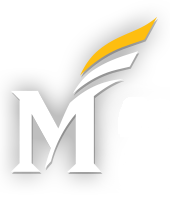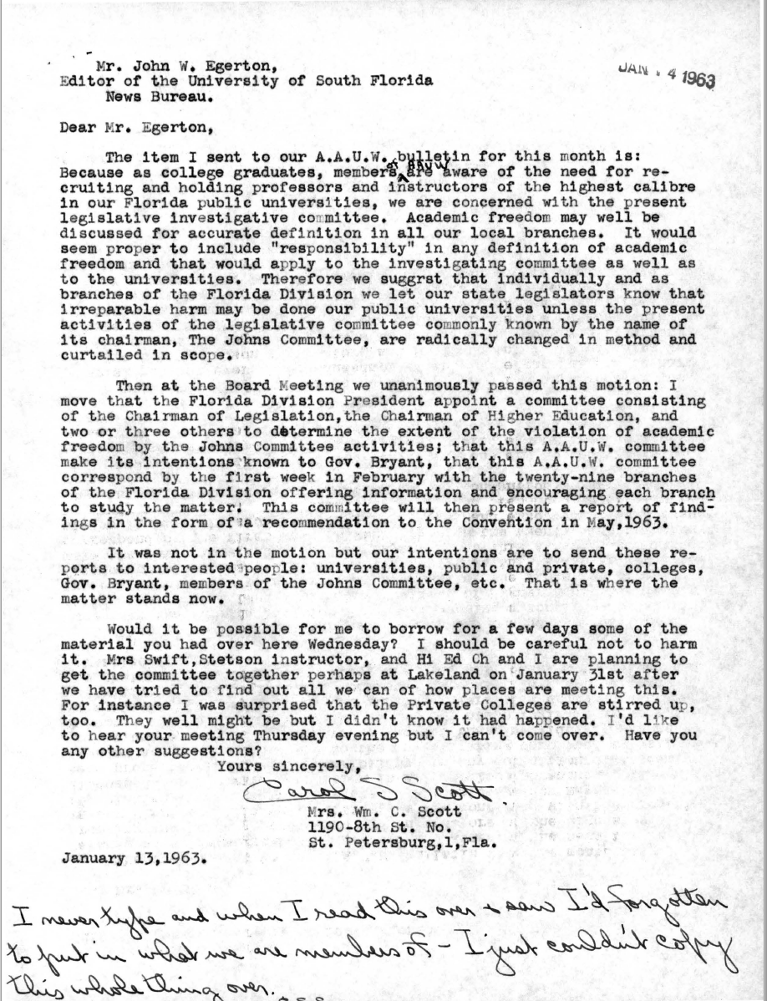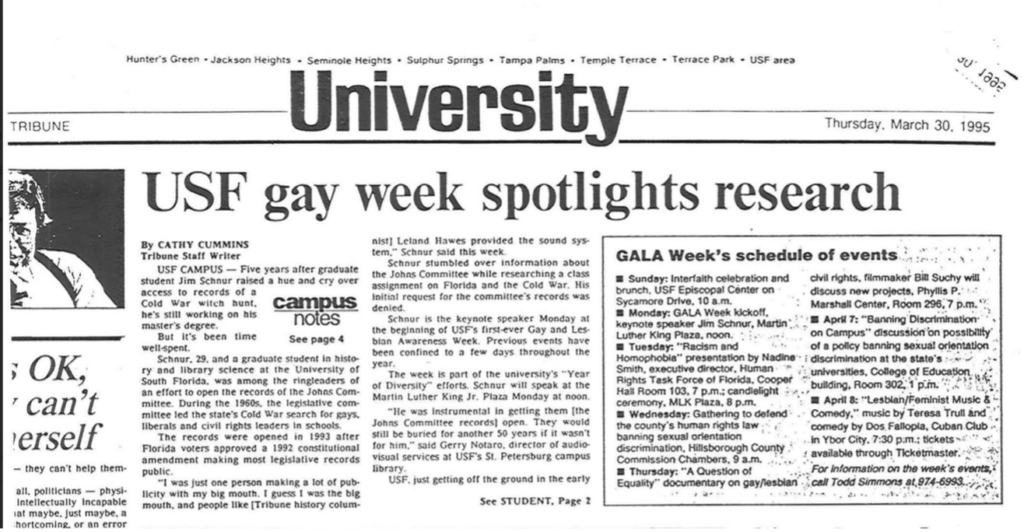by Meredith Peruzzi, Director, National Deaf Life Museum, Gallaudet University; Brian Greenwald, Professor and Director, Drs. John S. & Betty J. Schuchman Center, Gallaudet University; Jannelle Legg, Assistant Professor, Gallaudet University; and Jim McCarthy, Director, Gallaudet University Archives, Gallaudet University
Gallaudet University plays an important role in the history of higher education in the United States. For over 160 years, it has served as the nation’s only liberal arts university dedicated to educating deaf and hard of hearing college students. The university’s history and legacy are cataloged most prominently in the Gallaudet University Archives, established in 1980.
The Archives contains the most complete record of the institution’s evolution, dating back to correspondence with the school’s founding president, Edward Miner Gallaudet. The Archives is also the repository for materials generated by pedagogical, scholarly, and social activities related to deaf communities around the world. It belies the notion of archives as static, unchanging record of history; it is in fact changing all the time, as are the institution and the community whose history it safeguards.
Today’s U.S. deaf education system began in 1817 with the founding of the American School for the Deaf. Nearly two dozen state-supported schools were established over the next forty years, but their graduates rarely attended college. Beginning in 1854, members of the deaf community, including deaf artist John Carlin, called for higher education for deaf students.[1]
With congressional support, the charter for this school, then known as the National Deaf-Mute College, was signed by President Abraham Lincoln in 1864. While expanding access for deaf students the university was not available to all. Deaf women were denied admission from 1870 to 1887[2] and there were almost no Black college students until the 1950s.[3] Deaf students were excluded from graduate studies as well, gaining admission in 1960.[4] The initial student body was largely composed of literate White male deaf students from state residential schools for the deaf.
From the 1857 inception of the Kendall School, the K-12 school on campus, through the end of the 1950s, the vast majority of enrolled students were White. Black deaf children were sent to school near Baltimore. In 1952, parents of a Black deaf child named Kenneth Miller challenged the status quo. Miller vs. DC Board of Education (1952), which forced Gallaudet to open a second, segregated primary school on campus, helped set the stage for the landmark Brown vs. Board of Education of Topeka Supreme Court case two years later.[5] The Gallaudet University Archives has substantial holdings on the Miller case, which has been the focus of renewed interest as the university prepares a large-scale memorial to Louise B. Miller and her legacy. The Sandy White Collection on Segregation of Black Deaf Children in the United States, 1867-1967 was gathered by White while researching the 1990 film “Class of ‘52.” White’s collection was digitized in 2022, making these materials readily accessible.

The Archives began making its collections available online in 2008 with external funding and in partnership with on-campus units and cooperative agreements via the Washington Research Library Consortium (WRLC). Digital collections have expanded as funding allows.[6]
Researchers make extensive use of the digital collections. Newspapers produced by deaf schools across the United States, known as the Little Paper Family,[7] have been largely digitized, providing a rich source of information about deaf life in the nineteenth and twentieth centuries. These resources, along with information about alumni, photograph collections, and other reference material bring the history of the university and the deaf community to the world.
The digital archives are home to twenty discrete collections of approximately 22,000 files. More than 2,000 pieces of deaf art and sculpture are available via a public catalog supported by PastPerfect. Additional materials–often publications originating from outside the institution–are also available on the Internet Archive. Finally, all finding aids were recently migrated to an ArchivesSpace repository.
One topic of paramount importance at the university is sign language research which began in the 1960s. Although deaf people in the United States had been using ASL for over 100 years, it was commonly seen as a lesser form of English that could not convey abstract ideas. Even deaf people, having experienced discrimination for using it all their lives, did not believe ASL was a true language until this research demonstrated otherwise. The research team of Dorothy Casterline, Carl Croneberg, and William Stokoe produced the first papers on ASL linguistics, and Gallaudet published the first ASL dictionary in 1965.[8] The Archives holds records from this early linguistic study, including laboratory notebooks, research notes, department newsletters, and films.[9]
Film captures the visual nature of signed languages and numerous lectures, commencement addresses, student presentations, and recorded meetings are available on video. For example, the National Deaf Life Museum’s Gallaudet at 150 and Beyond exhibition featured a filmed Student Body Government meeting to demonstrate student governance on campus. In 2007, the university officially incorporated ASL-English bilingualism into its mission statement, and the number of official university records produced as videos increased exponentially. To preserve these films, Gallaudet’s digital collections must constantly contend with the complex challenges of ever-increasing demands for storage space, categorization, searching within items, and equipment upgrades. The university has used several video storage and retrieval technologies over the years in an ongoing effort to make signed language materials available online.
The groundswell in cultural pride associated with the recognition of ASL as a language and early disability justice movements led to an increased interest in preserving community heritage collections in the deaf community. The Archives now houses the records of schools for the deaf, deaf social organizations, deaf-related dissertations and theses, and deaf-managed organizations, the largest collection of its kind.
Research units on campus contribute to publicly available digital collections. The Drs. John S. & Betty J. Schuchman Deaf Documentary Center, for instance, documents the deaf lived experience and shares this knowledge through physical and online exhibits, films, and other digital works. The Deaf Printers Pages, for example, captures and preserves the last of many generations of deaf people who learned printing in school and worked at local and national newspapers nationally.[10]
The Deaf President Now movement is another example, presenting materials from the campus newsletter On the Green videos of the protestors, and oral history interviews.[11] These archives highlight a unique characteristic of research on deaf histories and sign languages: the ephemeral and embodied nature of signed languages. Unlike spoken languages with written forms, video recordings are the primary form by which sign language can be preserved, captured only if the cameras are rolling, and stored only through advances in technology.
The National Deaf Life Museum’s exhibition Left Behind: HIV/AIDS and the Deaf Community also drew from the Gallaudet Archives and described how deaf people struggled to access health information in the early days of the AIDS crisis. This project brought into sharp relief the nature of archival silences — the deaf gay community during the AIDS crisis faced stigmatization from hearing gay people as well as deaf heterosexuals, and many valuable historical documents were not kept. The Gallaudet Archives drew heavily on the Astro Rainbow Alliance of the Deaf in Houston materials, including a handmade notebook of members, marked “Confidential,” a t-shirt, a few papers from the National Coalition on Deaf Community and HIV/AIDS, funeral notices, and photographs. While this single box held a rich story, it also represents a gap in the Archives’ collections.

This gap is both notable and telling. As with many small communities affected by HIV, the storytelling is left to survivors who, in this case, often felt the need to be secretive about their identities, possibly destroying materials.[12]
Some deaf community members have been reluctant to donate materials to state or university archives, emphasizing the academy-community divide where deaf people do not trust hearing institutions to properly care for their materials. This, however, inhibits access to these records.[13] With a rich corpus of primary sources, the Gallaudet Archives has emerged as a major stakeholder in the field of deaf history. Sources include presidential papers, correspondence, local, regional and national deaf organizational records, sports and social clubs, photographs, maps, and physical objects. Scholars have made extensive use of these collections, and the deaf community is richer for it.
Gallaudet provides a valuable college experience for deaf students and the Archives can help tell this rich history. As elsewhere, though, there are many complicated stories in this past, including the treatment of African Americans, women, and other marginalized groups. Gallaudet University’s bilingual mission and required fluency in English and ASL set it apart from other universities. Gallaudet’s place in higher education cannot be understated – the cumulative knowledge generated by research over the past 160 years has shown our visual way of being adds to the diversity of higher education learning and scholarship that is made possible through our holdings at the archives.
[1] John Carlin, “The National College for Deaf Mutes.” American Annals of the Deaf and Dumb 6, no. 3 (1854): 175–83. http://www.jstor.org/stable/44401292.
[2] Lindsey M. Parker, “The Women of Kendall Green: Coeducation at Gallaudet, 1860–1910,” in A Fair Chance in the Race of Life: The Role of Gallaudet University in Deaf History, ed. Brian H. Greenwald and John Vickrey Van Cleve (Gallaudet University Press, 2008), 85–112, https://doi.org/10.2307/j.ctv2rcnfbs.11.
[3] Two black students were admitted during the 1880s, but neither completed their degree. A black student graduated in 1913, but he had enrolled as a Native American student to get around discriminatory practices in place at the time. National Deaf Life Museum, “James Gilbert, Jr. and Ennals Adams, Jr.,” Instagram, February 10, 2021, https://www.instagram.com/p/CLH-wYwsr5S/; Meredith Peruzzi, “Reframing Hume LePrince Battiste’s Impact,” Gallaudet Today, Fall/Winter 2020.
[4] Meredith Peruzzi, “Who Teaches the Teachers: History of the Normal School at Gallaudet University” (2010). Senior thesis, Gallaudet University.
[5] Sandra Jowers-Barber, “The Struggle to Educate Black Deaf Schoolchildren in Washington, D.C.,” in A Fair Chance in the Race of Life: The Role of Gallaudet University in Deaf History, ed. Brian Greenwald and John Vickrey Van Cleve (Washington, DC: Gallaudet University Press, 2008), http://archive.org/details/fairchanceinrace0000unse.
[6] The WRLC originally provided access to DSpace, and Gallaudet later transferred the digital collections to Islandora 7. In August 2023, the Archives began to migrate materials to the Elsevier-owned platform Digital Commons, which has been branded Interdisciplinary Digital Academics at Gallaudet, or IDA@Gallaudet.
[7] The “Little Paper Family” was an informal network of newspapers published at deaf schools, which were often exchanged by mail. Used as a source of vocational education for students working at the printing presses, these papers kept deaf community members abreast of distant happenings in the 19th and 20th centuries, as the telephone was inaccessible as a means of communicating news.
[8] Jane Maher and Oliver Sacks, Seeing Language in Sign: The Work of William C. Stokoe (Washington, DC: Gallaudet University Press, 2010), http://ebookcentral.proquest.com/lib/gallaudet/detail.action?docID=30359396.
[9] The William C. Stokoe Papers, 1946-1992 (MSS 189). Gallaudet University Archives, Gallaudet University, Washington DC. https://gallaudet.edu/archives/archives-collections/manuscript-collection/manuscripts-the-william-c-stokoe-papers-1946-1992/ ; Linguistics Research Laboratory, 1954-1984 (Record Group 1). Gallaudet University Archives, Washington DC. https://gallaudet.edu/archives/archives-collections/manuscript-collection/manuscripts-collection-linguistics-research-laboratory-1954-1984/
[10] Because hot-metal linotype work often created a loud working environment, it was often considered an ideal job for deaf people, though they also worked alongside hearing supervisors, editors, and others. The printing trade was commonly taught in deaf schools, and most deaf employees at the Post were Gallaudet alumni. As digital production took over, the number of deaf printers dwindled, and by 2000 the social and linguistic forms cultivated by deaf printers at the Post had faded entirely.
[11] The over 44 signed interviews with deaf and hearing employees offer insight into individual workplace experiences and, in recalling their stories, these videos also capture the signed vocabularies that have fallen out of regular usage as the field of printing has disappeared.
[12] Manon Sian Parry, “Public Health Heritage and Policy: HIV and AIDS in Museums and Archives.” História, Ciências, Saúde-Manguinhos 27, no. suppl 1 (September 2020): 253–62. https://doi.org/10.1590/s0104-59702020000300013.
[13] Octavian Robinson et al., “Deafness and Silences in the Archives,” in Cripping the Archives: Disability, Power, and History, ed. Jenifer Barclay and Stefanie Hunt-Kennedy (Champaign, IL: University of Illinois Press, forthcoming).



